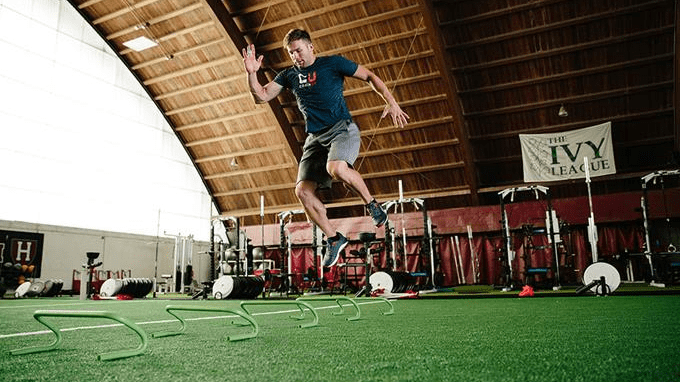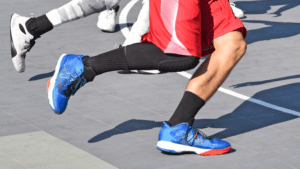If you’ve spent any time around sports you’ve likely heard the term plyometrics (or ‘plyo’), but may not know what it means. What exactly are plyometrics? What problem do they solve? Is this just more technical jargon used by coaches and trainers, or are plyometrics an actual tool that can effectively boost your athletic performance?
Plyometrics can be summed up as “jump training.” They can vastly improve an athlete’s athletic ability in terms of strength and explosiveness. No matter the level of experience, some form of plyometrics should be incorporated into all training programs.
Plyometric exercises should be done at a high level of intensity, but the number of reps should be kept to a minimum. The dynamic movements used within these exercises need to be executed with perfect form. Plyometrics, while necessary, increase the risk of injury and/or muscle fatigue if done in excess. It is advised that you perform these particular drills under the guidance of a professional coach or trainer.
Plyometrics can help athletes improve each of these elements of athleticism
STRENGTH

All athletics require some output of strength. Without it, athletes will struggle to be successful in their particular sport.
Incorporating plyometric exercises in your workouts will develop muscle strength, and stabilize the tendons surrounding them.
These exercises require fast, explosive movements, which cause the activated muscles to expand and flex at a higher rate of speed. Doing this repeatedly helps them become more powerful. This increased strength will raise the athlete’s ability to perform quicker and under control in a shorter amount of time.
INCREASED VERTICAL LEAP

The vertical jump is one of the basic tests of athletic ability. It is measured on how high, and how fast, an athlete can leave the ground. Needless to say, in order to improve vertical leaping ability, athletes need to jump—and jump a lot. Plyometric drills that repeatedly focus on getting height during jumps will develop the motor skills and the leg strength needed to increase height on jumps. Using resistance (i.e. bands, weight vests, etc.) during plyo training adds a variable that boosts how muscles respond, in turn creating more power that elevates jumping height.
EXPLOSIVE SPEED

Speed is widely considered to be the most unanimously required ability in athletics. Explosive speed can be identified by the amount of force released at the beginning of a straight-line, or lateral movement. Ideally, athletes should try to apply the maximum amount of power into the ground with each stride as they run. The more force that goes into the ground translates into running at a faster rate of speed.
An explosive burst of speed, or lack thereof, can be the difference between getting to a loose ball in the final seconds of a ball game, or getting around the corner and into the end zone for the winning touchdown.
The explosive nature of plyometric drills help athletes build the speed necessary to gain a competitive edge.
Plyometrics are essential for athletes looking to boost their level of performance. Dedicating 2-3 workouts per week to work on plyometrics will result in a notable increase of power, explosion, and speed. After the proper mechanics of plyometrics have been perfected, resistance can be added to make the muscles work harder, and become stronger. Here is a short list of basic plyometric exercises that you can add to your workout program:
- Broad Jumps
- Depth Jumps
- One Foot Hops
- Rocket Jumps
- Split Jumps
With our 100% money-back guarantee and vetted coaches, anyone can achieve their full athletic potential. CoachUp is the safest and easiest way to find a coach for personalized training. Find your perfect coach today and become the athlete you want to be!
How useful was this post?
Click on a star to rate it!
Average rating 4.5 / 5. Vote count: 17
No votes so far! Be the first to rate this post.



